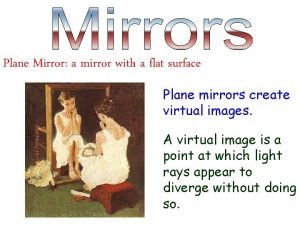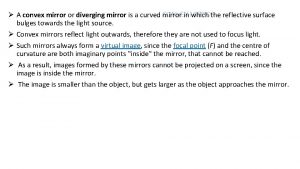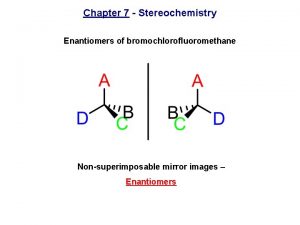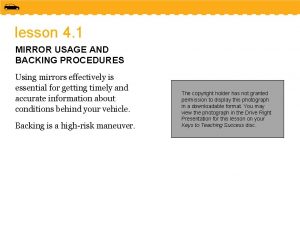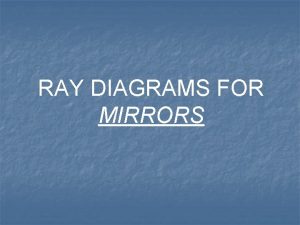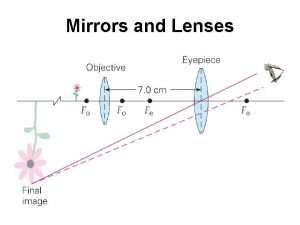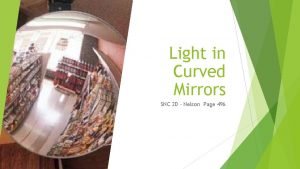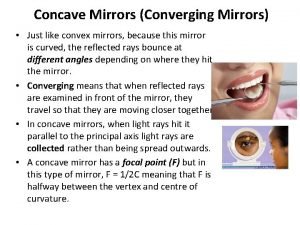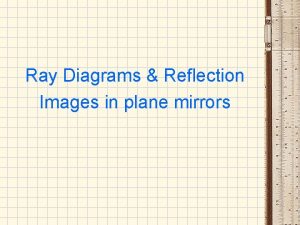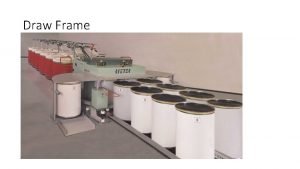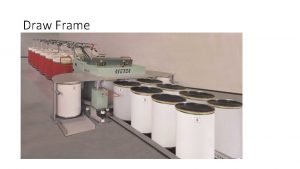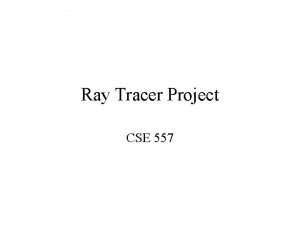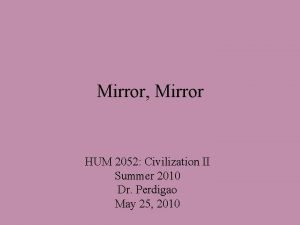Types of mirror When we draw a ray









- Slides: 9

Types of mirror When we draw a ray diagram we represent a mirror by drawing a line with dashes on the silvered (non-shiny) side. Most mirrors are flat and these are called plane mirrors. They give non-distorted lifelike images. A plane mirror Some mirrors are curved. These give distorted images. A concave mirror If a mirror curves inwards then it is a concave mirror; if it curves outwards it is a convex mirror. A convex mirror

Virtual images When you look at a mirror you see a virtual image that appears to be behind the mirror. The image appears to be the same size as the original object and the same distance behind the mirror as the object is from the mirror. distance object distance virtual image

Concave mirrors reflect rays of light to a focal point (F). Concave mirrors are converging mirrors, as the rays of light converge to a focus. If a light source is placed at the focus they produce a beam of parallel light rays. F f The distance between the mirror and the focal point is called the focal length (ƒ). The more curved the mirror is the closer the focus is to the lens.

Focal length of concave mirrors Finding of a concave mirror. Use a the rulermirror to Hold Chose athe distant measure in the other object (to get distance between hand move parallel rays of the lens and the itlight). closer to the screen this is screen- until a the focal clearlength image(ƒ). appears. ƒ Hold a plain white screen in one hand.

Uses of concave mirrors Concave reflectors are used to focus signals from distant satellites. Concave mirrors are used in allowing them to be more powerful for their size.

Convex mirrors reflect rays of light away from a focal point. Convex mirrors are diverging mirrors. The parallel are reflected so they appear to have come from a spot called the focus. F f

Uses of convex mirrors Convex mirrors are often used to see around corners, here in a busy corridor. The rear view mirror in a car is a convex mirror to widen the field of view.

Summary activities

Glossary l concave mirror – A mirror that curves in at the centre. l convex mirror – A mirror that curves out at the centre. l incident ray – The light ray that strikes a surface. l law of reflection – When light is reflected, the angle of incidence equals the angle of reflection. l lateral inversion – The reversal of an image in a mirror, which means that the left-hand side appears on the right and the right-hand side appears on the left. l normal – A line on a ray diagram drawn at right angles to the surface being hit by the light ray. l plane mirror – A mirror with a flat surface. l reflected ray – The light ray bounced back from a surface. l ray diagram – A diagram that shows what happens to light rays during processes such as reflection.
